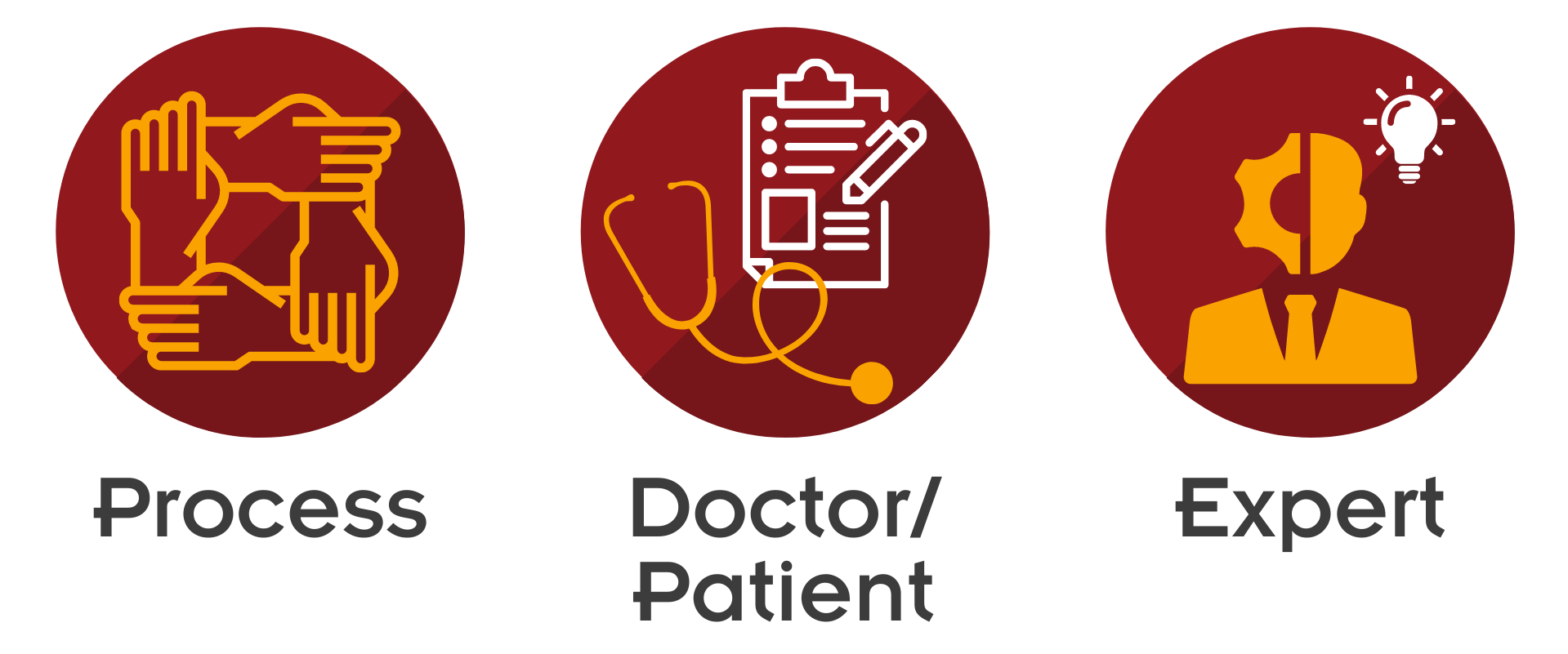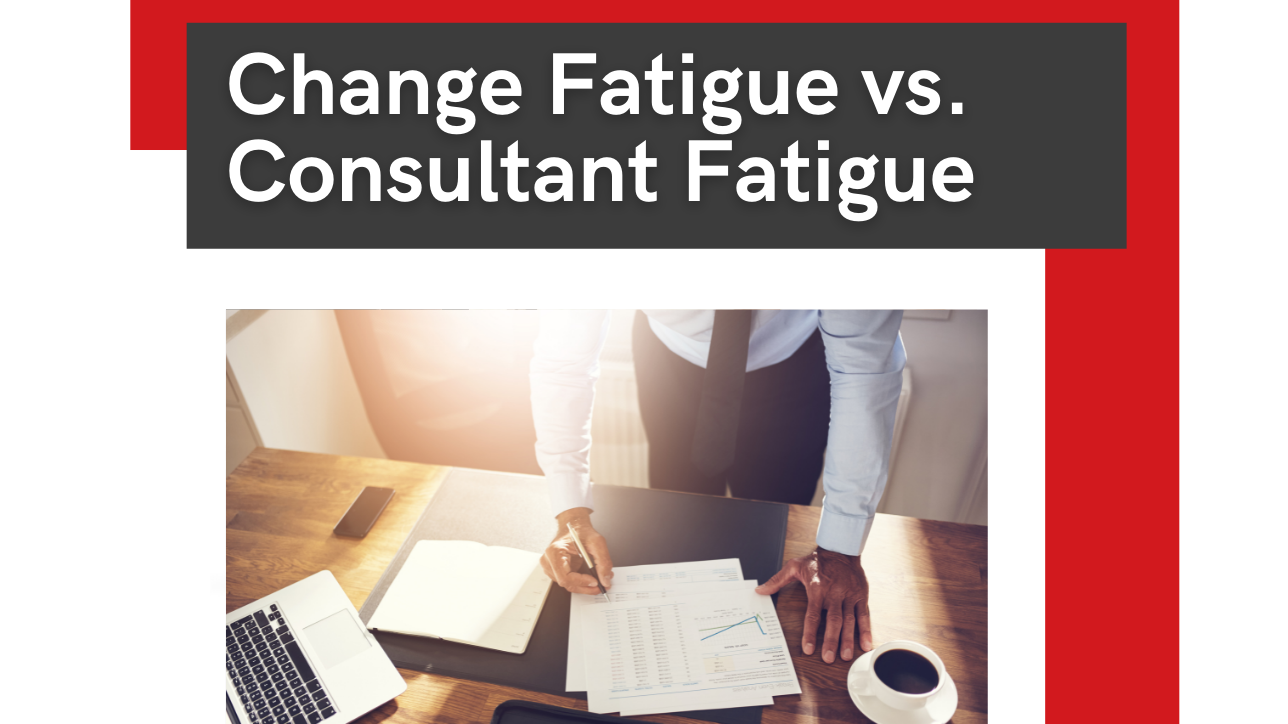Here is a familiar scene: Two colleagues stand around the watercooler and one of them says, “Did you hear management is hiring another consultancy to head up the new initiative?” The other groans and replies, “Not again.”
It’s no secret that when consultants are brought in to do a piece of change work, they aren’t always welcomed with all smiles. Since consultants are associated with change, and change can be hard to manage, we sometimes hear organizations talk about “consultant fatigue”. However, the idea of consultant fatigue can be translated to simply change fatigue which is “a general sense of apathy or passive resignation towards organizational changes by individuals or teams” (ThinkTransition). This often happens when an organization has gone through several unsuccessful transformational changes resulting from shallow change work and unsuccessful implementation.
Every organization’s leader needs to make a deliberate choice about how deep of a change they want to make before undergoing a change process. For true organizational change to occur, it is important for the change process itself to reflect the desired changes. Therefore, choosing a consulting partner whose approach aligns with the desired outcome is vital. This requires explicit contracting to fully understand their approach and ensure it aligns with the organization’s expectations, which will pave the way for a project’s success from beginning to end.
Understanding the three roles consultants typically take on will allow you to make an informed decision about which consultancy best meets your organization’s needs.
Three Different Models of Consulting
Reference: Karen Lee’s “The Expert Consultant”

Process Consulting Model
This model of consulting draws from the expertise of the existing organization to both develop solutions and decide on which options to adopt. The consultants are brought in for their expertise in helping the organization through an end-to-end process of diagnosing the problems in the current state, developing a solution, planning and implementing the change, and stabilizing the new state.
In this consulting relationship the organization owns both the problem to be solved and the solution and its implementation, whilst the consultant owns and facilitates a holistic process that ensures that the organization considers all the options and makes the right decisions in the right order. Through this approach the consultant helps the change sponsor and leadership groups make decisions, often advocating for more of the organization and the frontline employees to be involved in the process.
This approach may create some consultant fatigue amongst the senior leadership as it takes more time and energy to be involved in the end-to-end process than it does to hand the problem to a consultant. However, the tradeoff is that involving more people early on in decisions that will impact them, rather than pushing change on them later, ensures that more of the organization is prepared for the future changes. This leads to less change fatigue in the bulk of the organization.
The Doctor/Patient Consulting Model and The Expert Consulting Model
These two models are the most common offered by the larger consultancies and the role the consultants play when being brought into an organization, of course with the occasional exception.
In the doctor/patient consulting model the organization (patient) seeks out a consultant (doctor) to assess symptoms within the organization. The consultant diagnoses the problem and prescribes a solution that they believe will best cure the presented problem. In this consulting model, the consultants are sought out for their expertise. It is incumbent upon the consultant to properly diagnosis the problem based on the symptoms the organization describes. The accuracy of the consultant’s diagnosis is fundamental to the success of the solution prescribed so they will often require a lot of people’s time answering questions and gathering data for them to analyze.
This in itself creates consultant fatigue as people see them asking more questions. Another important element of the doctor/patient consulting relationship is that it comes down to the organization to properly implement the solution given. There is a significant amount of risk in the power shift from the consultant prescribing their solution to the organization owning that solution. Success ultimately comes down to how well the organization implements the consultant’s prescribed solution. If the ‘cure’ does not work it is the consultant who gets blamed, thus further contributing to consultant fatigue.
Like the doctor/patient consulting model, in the expert consultant model the consultants are brought in for their technical knowledge and specialization. However, the difference from the doctor/patient model is that the expert consultants are expected to deliver predetermined solutions to problems that the organization has already rightly or wrongly diagnosed. In this model it is the consultants who are seen to be forcing changes into the organization, thus creating consultant fatigue.
Both the doctor/patient and expert models of consulting take a more compliance approach to change. A compliance approach to change often involves telling the organization to change rather than pulling for commitment and readying the organization for change.
You cannot just tell people to change if the leader desires a deep change in the organization. This approach typically leads to longer implementation times on the back half of the project compared to taking a more committed approach upfront. This then becomes a pay now or pay later situation. While doctor/patient and expert consulting approaches will get you a recommended solution faster, making it a reality for the organization will take much more time and effort and lead to consultant/change fatigue.

This approach energizes leaders because they are getting solutions to an identified problem without much effort or ownership on their part. However, they are doing this at the expense of fatiguing the organization as change is pushed upon them during the implementation of the consultant’s solutions.
For companies that mainly work with consultancies that utilize the doctor/patient or expert approach, employees may feel a sense of fatigue from routinely being handed instructions to implement a solution that they didn’t help create. They might not understand all the intricacies of the solution or why particular decisions were made. There is a greater sense of powerlessness which creates a greater sense that management may not care. This has impacts across the entire organization, which has been burnt out on change.
At OTM we firmly believe that people own what they help create which leads us to use the process consulting model. Contrarily to the doctor/patient and expert models of consulting, the process consulting model creates PULL for change in a commitment-based approach that builds change readiness, rather than PUSHING change onto people and expecting compliance. While the process consulting approach demands more involvement and time upfront, it will save 10-30% of time and effort when the change is implemented and overcome the inevitable change/consultant fatigue associated with other approaches.
However, at OTM we know that it is always important to understand what is going on in the organization at any point in time. There will inevitably be occasions when it is appropriate to switch into doctor/patient mode or even expert mode, but not without being aware of the contribution that this may make to change/consultant fatigue. The consultant’s awareness of and attentiveness to the role that they play is paramount to the delivery of successful and sustainable change in the client organization.
Do you know what approach a particular consultancy will take before starting a project with them?
Most consultancies have a preferred way of working and stick to it. This can lead to poorly designed change initiatives that drive an organization toward more change fatigue. It is important to understand the preferred way of working of your chosen consulting partner and the ‘pay now v pay later’ trade off you are making.
At OTM we adopt a process consulting model, but our secret sauce is being acutely aware of the role we play at all times because one role is not perfect in every situation. Organizations need consultant’s that are flexible enough to understand where all stakeholders are in their change journey and what role is best suited to meet their needs throughout the entire engagement. Through this agile style of consulting, we can effectively navigate change, so your organization feels less change fatigue in the long run.
Never miss out on OTM blog updates.
Subscribe to be notified whenever we post.
Dallin Whitfield was a Consultant at ON THE MARK.
OTM is the leading global boutique organization design consultancy with offices in the USA and UK. With over 450 successful redesigns and operating model modernizations completed, OTM is owner of the industry’s most integrated, comprehensive and holistic organization design solution. OTM enables its clients to realize their future ambitions.


